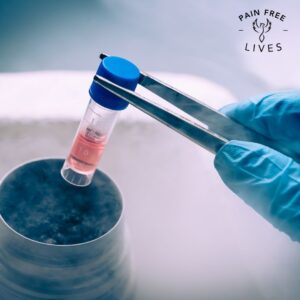Platelet-Rich Plasma (PRP) is one of those treatments that sounds high-tech and in many ways, it is. You’ve probably heard it mentioned in conversations about sports injuries, joint pain, or even cosmetic treatments. But if you’re someone dealing with ongoing discomfort maybe in your knees, back, or shoulders you might be wondering: Can PRP actually help me feel better?
The short answer is: possibly. But let’s be clear about what PRP is and what it isn’t. It’s not a magical fix. It’s not going to regrow cartilage or reverse years of wear and tear. What it can do is help your body function better and feel less pain, if it’s used the right way, for the right reasons.
Often mischaracterized as a miracle cure, PRP is not a one-size-fits-all solution. It offers meaningful benefits in certain conditions, particularly for improving function and reducing pain.
What Is PRP and How Is It Prepared?
PRP is created by drawing a sample of the patient’s own blood, then placing it in a centrifuge to separate out components. The resulting yellow fluid rich in platelets, proteins, and growth factors is what’s known as platelet-rich plasma. This concentrate is then injected into areas of concern, such as joints, tendons, or even spinal discs, with the goal of enhancing the body’s natural response to injury or chronic stress.
Because it’s derived from the patient’s own blood, PRP carries minimal risk of rejection or allergic reaction. Its appeal lies in its non-surgical nature and its ability to be applied across a wide range of musculoskeletal conditions.
Where PRP Shows the Most Promise
While PRP is widely used, clinical evidence for its effectiveness varies depending on the condition. One area where research is especially strong is in the treatment of lateral epicondylitis, also known as tennis elbow. Multiple peer-reviewed studies have confirmed PRP’s ability to reduce pain and improve function in individuals with this condition.
Despite this, insurance providers have been slow to approve coverage, even for conditions where outcomes are well-supported. Patients seeking PRP treatments for tennis elbow and similar musculoskeletal issues often pay out of pocket, which can limit access to a therapy with proven benefits.
Outside of tennis elbow, PRP is frequently used for other conditions including osteoarthritis, ligament injuries, and chronic tendonitis. While early data in these areas is promising, the evidence is less definitive. The effectiveness of PRP in these cases tends to depend on variables such as injury severity, injection technique, and patient response.
What PRP Does And Doesn’t Do
A common misconception is that PRP “heals” damaged tissue. This oversimplifies a complex biological process. PRP does not regrow cartilage or reverse structural damage. Its true value lies in promoting improved function and comfort through localized support of the body’s healing pathways.
The injected plasma stimulates a controlled inflammatory response in the target area. This may involve temporary swelling, soreness, or warmth normal signs that the body is activating its repair mechanisms. Over time, this can lead to reduced pain and improved range of motion. However, changes visible on MRI or X-ray are unlikely, and shouldn’t be considered the primary indicator of success.
The mechanism is not about structural regeneration, but rather modulating inflammation, supporting soft tissue recovery, and relieving pain. In this sense, PRP serves as a biological nudge, helping the body do what it’s already trying to do, more efficiently.
Setting Realistic Expectations
For patients considering PRP, it’s important to have a clear understanding of what the process involves. In most cases, results are not immediate. Improvement may take several weeks or even months, and some conditions may require more than one injection for optimal benefit.
There may be an initial flare-up of symptoms post-injection as the area reacts to the concentrated plasma. This is expected and typically short-lived. Follow-up care often includes activity modification, physical therapy, or adjunctive treatments to support long-term results.
Additionally, PRP is not appropriate for every type of pain. It is best used in cases where the goal is to enhance function and manage inflammation, not to reverse advanced degeneration or replace surgical interventions when those are clearly indicated.
When PRP Makes Sense
Patients most likely to benefit from PRP include those with:
- Mild to moderate joint degeneration
- Tendon injuries that haven’t responded to conservative care
- Chronic pain localized to one region (e.g. elbow, knee, or shoulder)
- A desire to avoid steroid injections or surgery
- A willingness to pursue recovery over time, not overnight
As with any medical procedure, a thorough evaluation by a qualified physician is essential. Imaging, physical assessment, and an understanding of the patient’s functional goals all inform whether PRP is an appropriate tool in their treatment plan.
A Deeper Dive Into the Science
In a recent video Dr.Aalai offers an in-depth explanation of PRP and how it’s being applied in both spine and joint care. He also addresses the overuse of terms like “healing” in mainstream conversations, emphasizing the importance of accuracy when educating patients. Those curious about whether PRP is right for their specific condition will find his perspective both grounded and informative.
🎥 Watch the full video now on the Pain Free Lives YouTube channel to get the clinical context behind the procedure and hear about its real-world applications.







